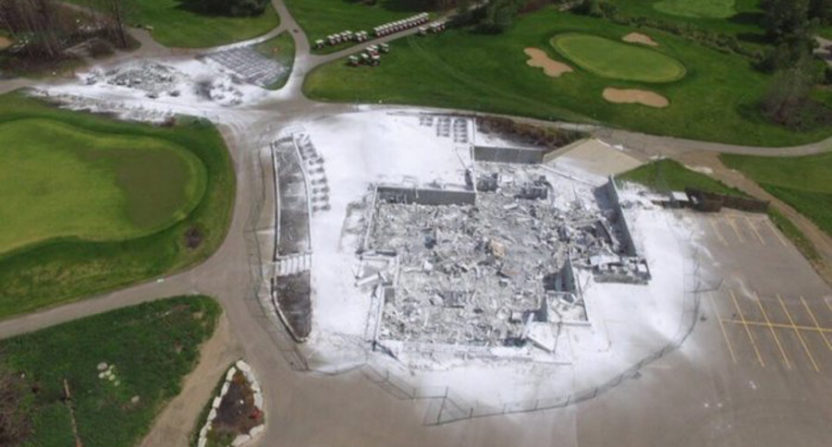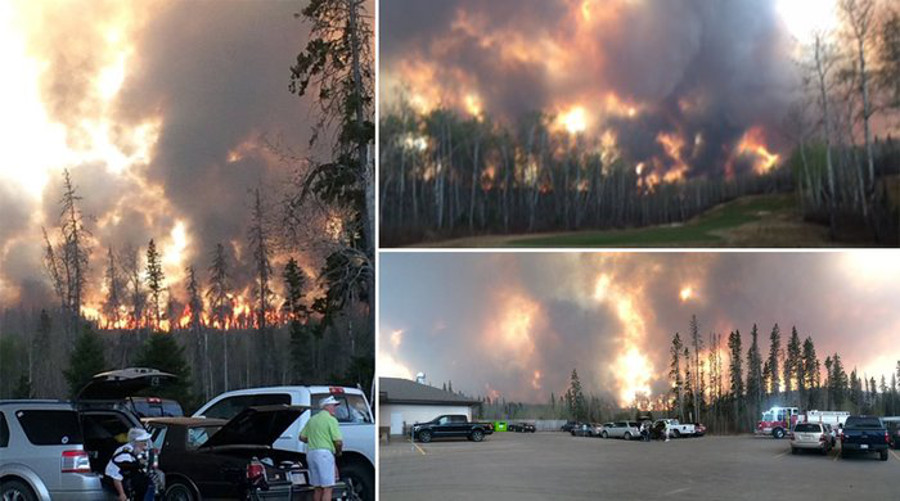Plenty of golf courses have recently been hit by disasters, from fires in California to hurricane-caused floods in Texas and Florida. In a piece published on Golf.com Wednesday, Dylan Dethier explored another course that’s undergoing quite the recovery, and what lessons it might have for other affected courses.
The course in question is the Fort McMurray Golf Club in northern Alberta, Canada, which saw its buildings destroyed (you can see the clubhouse foundations above) in a devastating May 2016 fire that forced the evacuation of the entire town and did plenty of damage. Here’s a look at the fires on the day of the evacuation:
The club’s fairways stayed intact thanks to their heavy watering, though, and the club was able to reopen less than two months later. Several club employees spoke to Dethier about the quick rebuild and the importance of bouncing back for an affected community:
“I don’t know if you’ve see the pictures or not,” [head pro Jason] Vaughan said, “but the clubhouse literally just looked like a big hole in the ground, and the dirt kind of just fell into the basement.”
But the wardens of Fort McMurray refused to let the disaster define their community, or their course. Vaughan remains attached to a powerful idea: If golf courses can emblemize a city’s devastation, they can also serve as agents of its revitalization.
“It gets better,” Vaughan said. “We’re coming back bigger and better.”
..“The thing now in Fort McMurray is let’s build not just for today, but for three years from now, four years from now,” [food, beverage and tournament director Colleen] Stewart said. “‘Bigger’ and ‘better’ seem to be buzzwords around the entire community.”
Some of the rebuilding efforts can be seen in the below photo of a summer party at the golf club, with Stewart at center and Vaughan at right.
The club previously hosted PGA Tour Canada events (in fact, one was rescheduled and moved around the fire, but with proceeds still going to Fort McMurray relief), and they’re working back towards that level. They opened a new nine-hole “Foxtail” course at the start of this year, and they’ve been building a new clubhouse, which will be over a third larger than the old one and open year-round.
And while their daily numbers haven’t hit the heights they did before the fire (partly thanks because thousands have left Fort McMurray altogether), they’re still doing very well. Stewart said the decision to quickly reopen the course on July 1 last year (following a one-day driving range opening in June, and several informal gatherings at the course) was key in helping the community gather and rebuild, too.
“We made the point of opening as quick as we could just to say okay, you’re getting out, you’re outside, and feeling a bit of normalcy,” Stewart said. “You’re with your friends, and it was huge for everybody because it was just such talk therapy, like what’s your story, what’s your story, what’s your story?
The moves this golf club made aren’t going to be completely applicable everywhere else, of course. But their move to quickly get back on their feet and serve as a community gathering place is impressive, and it’s remarkable that they’ve found ways to bounce back not just to where they were, but to an even higher level. And they’ve done so while being an important part of a larger community rebuild.
That’s a lofty thing to aim for, but this club appears to have pulled it off.
[Golf.com]








